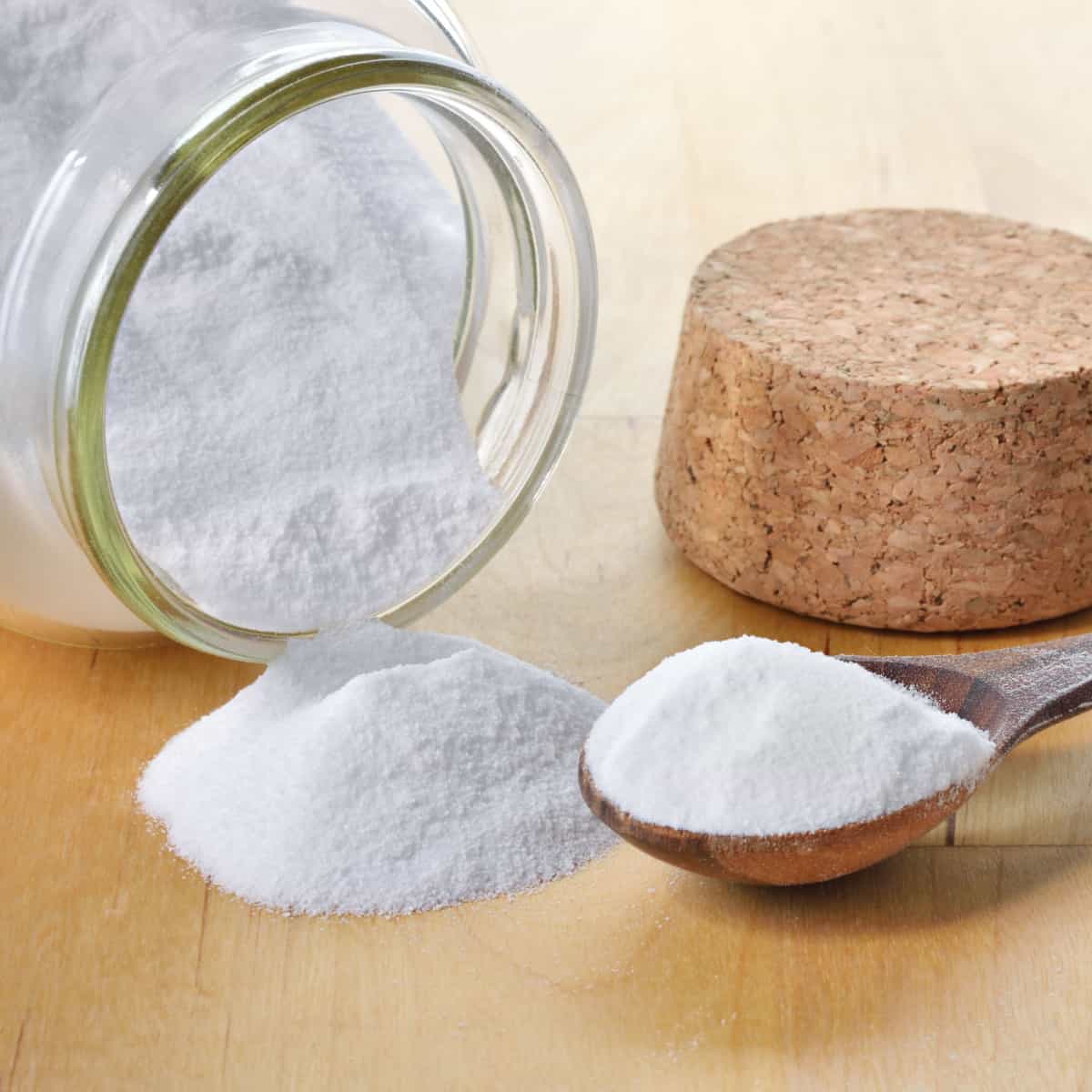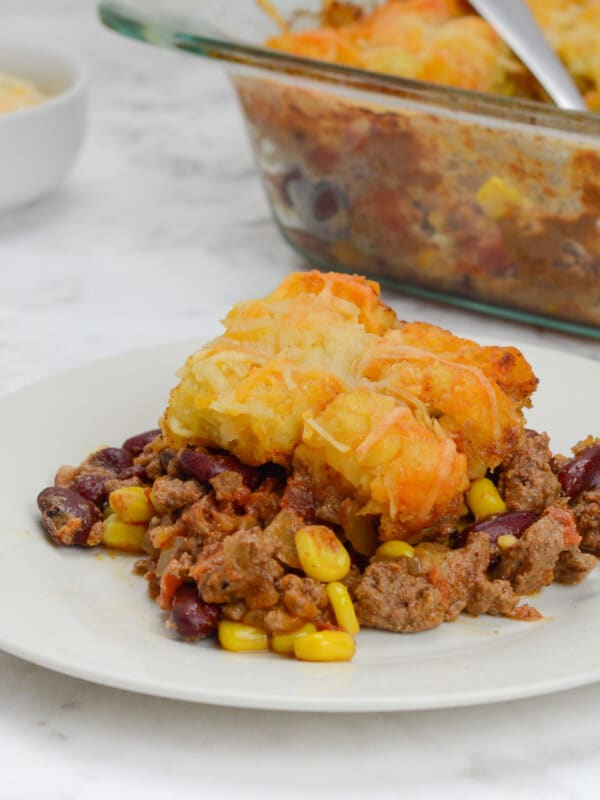Have you ever sifted through your pantry for baking soda, only to come up empty-handed right when your recipe needs it most?

You’re definitely not alone in this. Baking soda is a powerful leavening agent, giving rise to everything from fluffy pancakes to tender cookies. Its ability to create airy, light textures is unparalleled, making it a go-to ingredient for both novice and seasoned bakers alike.
But, what do you do when baking soda isn’t an option?
Perhaps you’re dealing with dietary restrictions, monitoring your sodium intake, or maybe it’s just not stocked in your pantry. This is where the ingenuity of substitutes comes into play.
With an array of substitutes at your disposal, from baking powder to buttermilk, you can ensure that your baked goods are always just as good, regardless of what your kitchen cupboard holds.
Here’s what to look for in your pantry when that baking soda is missing.
What is Baking Soda?
Baking soda, also known as sodium bicarbonate, is a white crystalline powder that is commonly used as a leavening agent in baking. Its primary role in the kitchen is to cause dough and batter to rise.
When baking soda is mixed with moisture and an acidic ingredient (like yogurt, chocolate, buttermilk, or honey), it reacts and produces carbon dioxide gas. This gas formation creates air bubbles in the dough or batter, leading to a light and fluffy texture in baking.
The chemical properties of baking soda are what makes it essential for certain recipes. It is a base, and when it reacts with an acid, it neutralizes the acid and creates the carbon dioxide gas mentioned earlier. This reaction not only helps to leaven baked goods but also can affect the flavor by neutralizing acidic ingredients, making them less sharp.
Because of its specific chemical properties, when a recipe calls for baking soda, it’s usually balanced with an acidic ingredient to ensure the desired reaction occurs.
Reasons to Substitute Baking Soda
Substituting baking soda in recipes can often be driven by health-related and practical considerations.
Health-wise, individuals on low-sodium diets, particularly those managing conditions like hypertension or heart disease, may need to reduce their sodium intake, and baking soda is notably high in sodium. Although rare, some people may experience allergies or sensitivities to baking soda which manifest as skin irritations or other allergic reactions.
Those adhering to specific dietary restrictions, like paleo or gluten-free diets, often look for substitutes that align with their nutritional needs.
The Best Baking Soda Substitutes in Your Kitchen
Sometimes the need to substitute baking soda is as simple as not having it on hand when you’re ready to bake. Other times, it’s about experimenting with different flavors and textures in baking; different leavening agents can impart distinct characteristics to baked goods.
Using yogurt or vinegar as substitutes can alter the flavor profile, offering more nuanced tastes. Substitutes like baking powder provide more flexibility in the baking process compared to baking soda, which reacts immediately upon mixing with wet and acidic ingredients.
Here are some of the best options for baking soda substitutes for your kitchen.
Baking Powder
Baking powder and baking soda, while often used interchangeably in recipes, are distinct in their chemical composition and how they react during the baking process.
Baking powder is a complete leavening agent that contains both sodium bicarbonate (the base) and an acid (usually cream of tartar).
Baking powder comes in two types: single-acting and double-acting. Single-acting baking powder reacts with moisture while double-acting baking powder reacts in two phases – once when wet and again when exposed to heat.
When substituting baking powder for baking soda, the general rule is to use about 2-3 times more baking powder than baking soda. For example, if a recipe calls for 1 teaspoon of baking soda, you should use 2-3 teaspoons of baking powder.
This may vary depending on the other acidic ingredients in the recipe. If the recipe includes a significant amount of an acidic ingredient, the amount of baking powder required may be less.
This substitution can slightly alter the taste and texture of the final product. Baking powder can sometimes leave a bitter aftertaste if used in large amounts.
The texture of the baked goods may also be affected. Baking powder can cause the product to rise more than baking soda would, potentially leading to a lighter, airier texture.
Test out your baking skills now with these amazing baking recipes!
Potassium Bicarbonate
Potassium bicarbonate is an effective substitute for baking soda, especially beneficial for those on low-sodium diets.
Unlike baking soda, which is high in sodium, potassium bicarbonate provides a sodium-free option, making it an excellent choice for individuals looking to reduce their sodium intake for health reasons, such as managing blood pressure or heart health.
Potassium bicarbonate can typically be substituted 1:1 for baking soda. This means if your recipe calls for one teaspoon of baking soda, you can use one teaspoon of potassium bicarbonate as a direct replacement.
While potassium bicarbonate is a great substitute, it can sometimes affect the taste and texture of your baked goods. You may notice subtle differences, but these are generally minimal and don’t significantly alter the overall flavor or quality of the baked item.
For those monitoring potassium levels, such as individuals with kidney issues, it’s important to consider the potassium content in potassium bicarbonate.
Self-Rising Flour
Self-rising flour is a unique baking ingredient that can replace baking soda in certain recipes. This type of flour is a blend that typically includes all-purpose flour, baking powder, and salt. The baking powder component makes self-rising flour a convenient alternative when a recipe calls for baking soda.
Self-rising flour is particularly useful in recipes that require both flour and a leavening agent. When you use self-rising flour, you are effectively substituting both the flour and the baking soda in the recipe.
Whipped Egg Whites
Whipped egg whites can be used as a leavening substitute in certain baked goods, particularly those where a light, airy texture is desired.
The technique involves beating egg whites until they form stiff peaks, then gently folding them into the batter. This process incorporates air into the mixture, providing lift and lightness.
This substitute works best in recipes like sponge cakes, soufflés, and mousses, where the primary goal is to achieve a fluffy texture. It’s less effective in recipes that require a strong leavening agent or have a denser structure, such as cookies or bread.
Give self-rising flour a try in one of these muffin recipes for a great addition to breakfast.
Club Soda
Club soda can be a useful substitute for baking soda in certain recipes because of its carbonation.
The bubbles in club soda can mimic the effects of baking soda by introducing air into the batter or dough, which helps to create a lighter and fluffier texture. This makes club soda particularly suitable for recipes like pancakes, tempura batters, and light cakes.
When using club soda as a substitute, it’s important to consider the other liquid ingredients in the recipe. Since club soda is a liquid, you may need to adjust the amounts of other liquids to maintain the desired consistency. The key is to preserve the balance of wet and dry ingredients.
Ener-G Egg Replacer
Ener-G Egg Replacer is a popular vegan egg substitute that can mimic some of the properties of baking soda, especially in terms of leavening and binding.
Made primarily from potato and tapioca starch, it is designed to replace eggs in baking but can also be utilized to provide structure and lightness in recipes traditionally requiring baking soda.
Ideal for vegan baking, Ener-G Egg Replacer works well in a variety of recipes, especially where eggs are a key component for binding and rising. This includes cakes, muffins, cookies, and quick breads.
To prepare it, one typically mixes a specific amount of the powder (as indicated on the package) with water, which then replaces both the eggs and, in some cases, the baking soda in the recipe.
When using Ener-G Egg Replacer as a baking soda substitute, note that while it can help provide lift and texture, the results may not be identical to those achieved with traditional baking soda.
The leavening might be less pronounced, so it’s best for recipes where a subtle rise is sufficient.
Baker’s Ammonia (Ammonium Carbonate)
Baker’s Ammonia, also known as ammonium carbonate, can serve as a substitute for baking soda in specific types of baking recipes. Historically used before the advent of modern baking powder and baking soda, it’s known for its unique leavening properties.
Baker’s Ammonia is ideal for thin, dry baked goods like crackers and cookies, especially those that are meant to be crisp and light.
It’s not recommended for moist, dense baked goods like cakes, as the ammonia smell might not fully dissipate during baking.
It’s used in similar quantities to baking soda, but because it’s a stronger leavening agent, slight adjustments may be needed.
The main consideration when using Baker’s Ammonia is its strong smell during baking, which does disappear once the baked goods are cooked. It’s important to bake in a well-ventilated area when using this substitute.
All these thoughts about baking! Why not get in the kitchen and make one of the delectable desserts?





